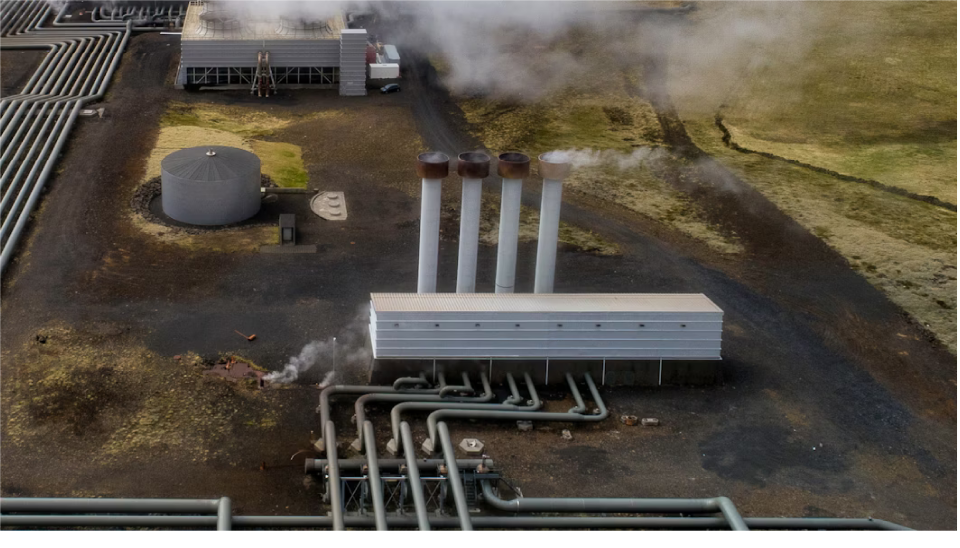By Ejekwu Chidiebere with agency report
- Technology breakthroughs to unlock geothermal energy’s vast potential in countries across the globe
- Untapped underground energy source to help meet world’s rapidly growing electricity demand however cost reductions needed to push new generation of projects
- Geothermal energy could meet 15% from the current 1% of global electricity demand growth between now and 2050
- Clear, long-term regulatory visibility for investors is critical
- Employment in the sector to increase six-fold to 1 million jobs by 2030
Energy Window International (Media) July 21 2025
The report, “The Future of Geothermal Energy” which posited that geothermal energy could meet 15% of global electricity demand growth between now and 2050 has however underlined the need for swift decline in the costs of achieving full-circle construction of geothermal projects across the regions around the globe. This IEA says means the deployment of as much as 800 gigawatts of geothermal capacity worldwide, delivering annual output equivalent to the current electricity demand of the United States and India put together.
Geothermal energy according to IEA offers abundant, highly flexible and clean electricity supplies that can support variable renewable technologies such as wind and solar while complementing other low-emissions sources like nuclear. Adding that geothermal currently meets about 1% of global electricity demand, which as the report indicated, had ridden on what it called, “a new first-of-its-kind country-level analysis”, conducted in collaboration with Project InnerSpace, which according to IEA also were pointers that next-generation geothermal technologies have the technical potential to meet global electricity and heat demand many times over.
Of Importance also is the fact that geothermal energy has the potential to draw upon the expertise of today’s oil and gas industries through the use of existing drilling techniques and equipment in deeper navigation of the earth’s surface to tap into vast low-emissions energy resources.
“New technologies are opening new horizons for geothermal energy across the globe, offering the possibility of meeting a significant portion of the world’s rapidly growing demand for electricity securely and cleanly,” says IEA Executive Director Fatih Birol. “What’s more, geothermal is a major opportunity to draw on the technology and expertise of the oil and gas industry. Our analysis shows that the growth of geothermal could generate investment worth $1 trillion by 2035.”
IEA also described conventional geothermal as “a location-specific and niche technology” of today, obvious indicators highlighted easy access to resources as fundamental largely due to the fact that most of the installed capacity is found in countries that have either have volcanic activity or straddle tectonic fault lines.
Current leaders in the space Energy Window International (Media) learnt include the United States, Iceland, Indonesia, Türkiye, Kenya and Italy. It also learnt that about 100 countries or more already have policies in place for solar PV and onshore wind but with only about 30 countries who have ready-made policies for geothermal. “Moving geothermal up national energy agendas with specific goals, backed support for innovation and technology development, can go a long way to reducing project risk perception and unlocking new investment.”
Clear, long-term regulatory visibility for investors is key in the mitigation of risks especially in the early-stage development as it has the tendency to provide visibility on investment returns, which in turn of course will improve the cost competitiveness of geothermal projects. This has also has the tendency of driving costs to fall by as much as 80% by 2035 to around $50 per megawatt hour (MWh) thereby making geothermal the cheapest source of “dispatchable” low-emissions electricity on a par with existing hydropower and nuclear installations. “At such price levels, geothermal would also be highly competitive with solar PV and wind paired with battery storage.”
Total investment in geothermal the report has highlighted could reach $1 trillion by 2035 and $2.5 trillion by 2050, and that’s If next-generation geothermal grows strongly in the coming years, with employment in the overall geothermal sector projected to increase six-fold to 1 million jobs by 2030.
The oil and gas industry has a key role to play in making geothermal more competitive. “Up to 80% of the investment required in geothermal involves capacity and skills that are transferrable from existing oil and gas operations,” the oil and gas sector therefore has a lot to gain while tapping from the potential of geothermal energy. “Not only is it an opportunity to develop new business lines in the fast-growing clean energy economy, but it can also serve as a hedge against commercial risks related to projected future declines in oil and gas demand.”
In this era of digitalized economic activities and popularity of artificial intelligence in running businesses, the report highlights how geothermal potentials could help in powering the increasing number of large data centres in the technology sector. Adding that large technology companies were already signing power purchase agreements with new projects as next-generation geothermal environment continues to offer a stable and essentially inexhaustible power source.
However permitting and administrative red-tapes look like cogs at the wheels achieving full commissioning of a geothermal project which also takes like a decade to build, says IEA. To address this obvious impediment, IEA suggests that governments simplify permitting processes through consolidation and acceleration of all the administrative steps involved, consider that dedicated geothermal permitting regimes be separated from minerals mining, while strengthening policies and regulations that will enforce robust environmental standards for the sustainable development of geothermal projects.

